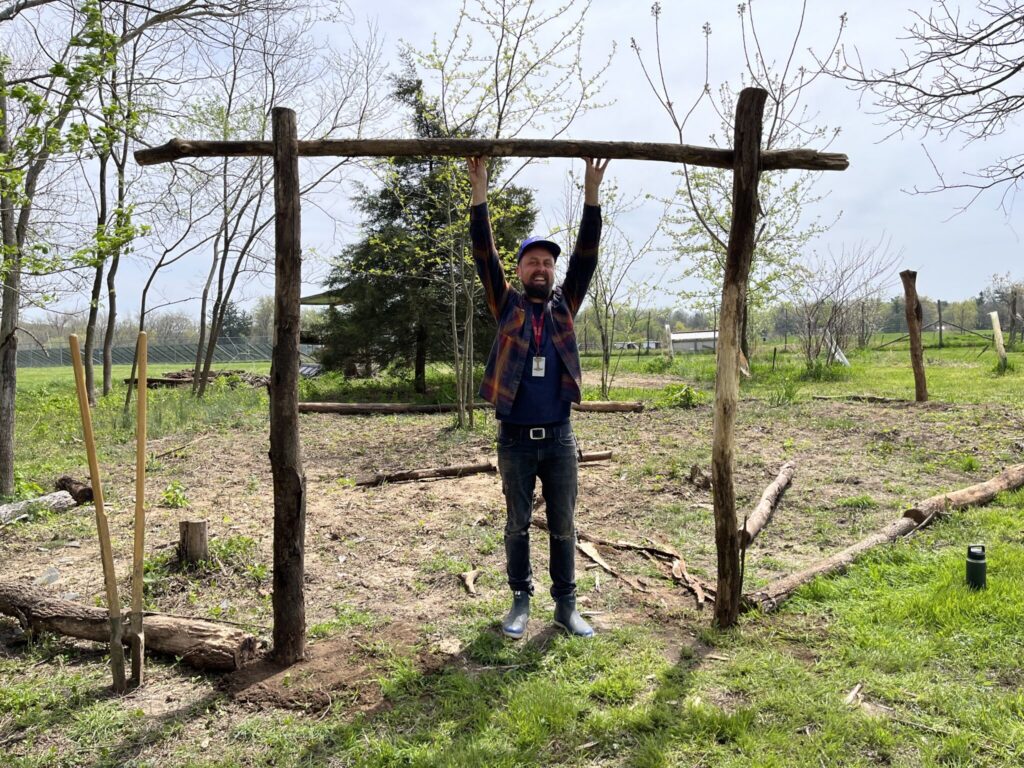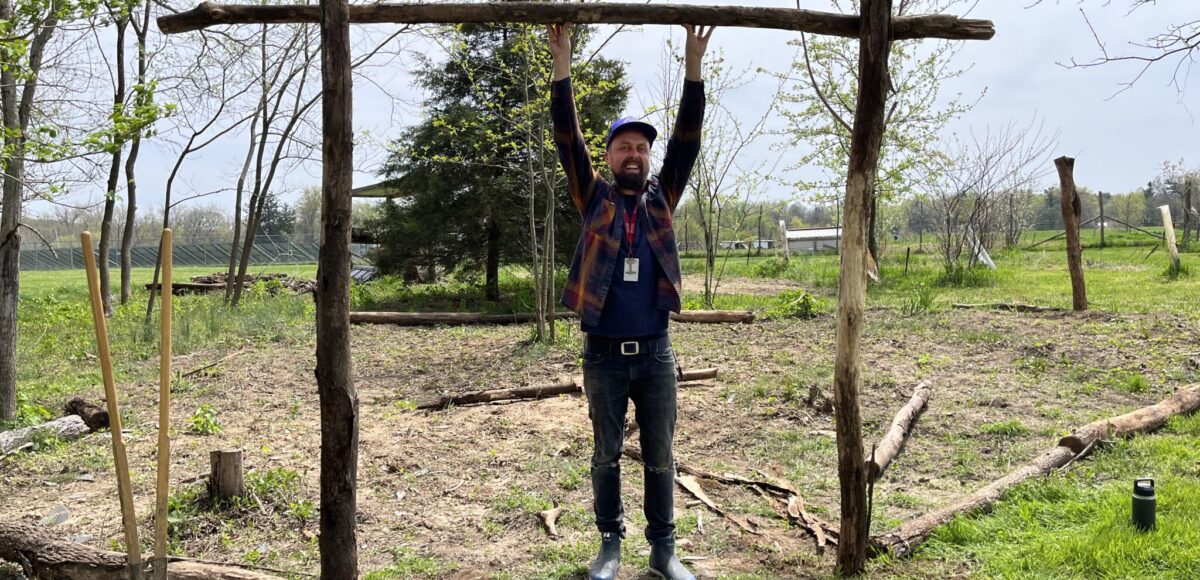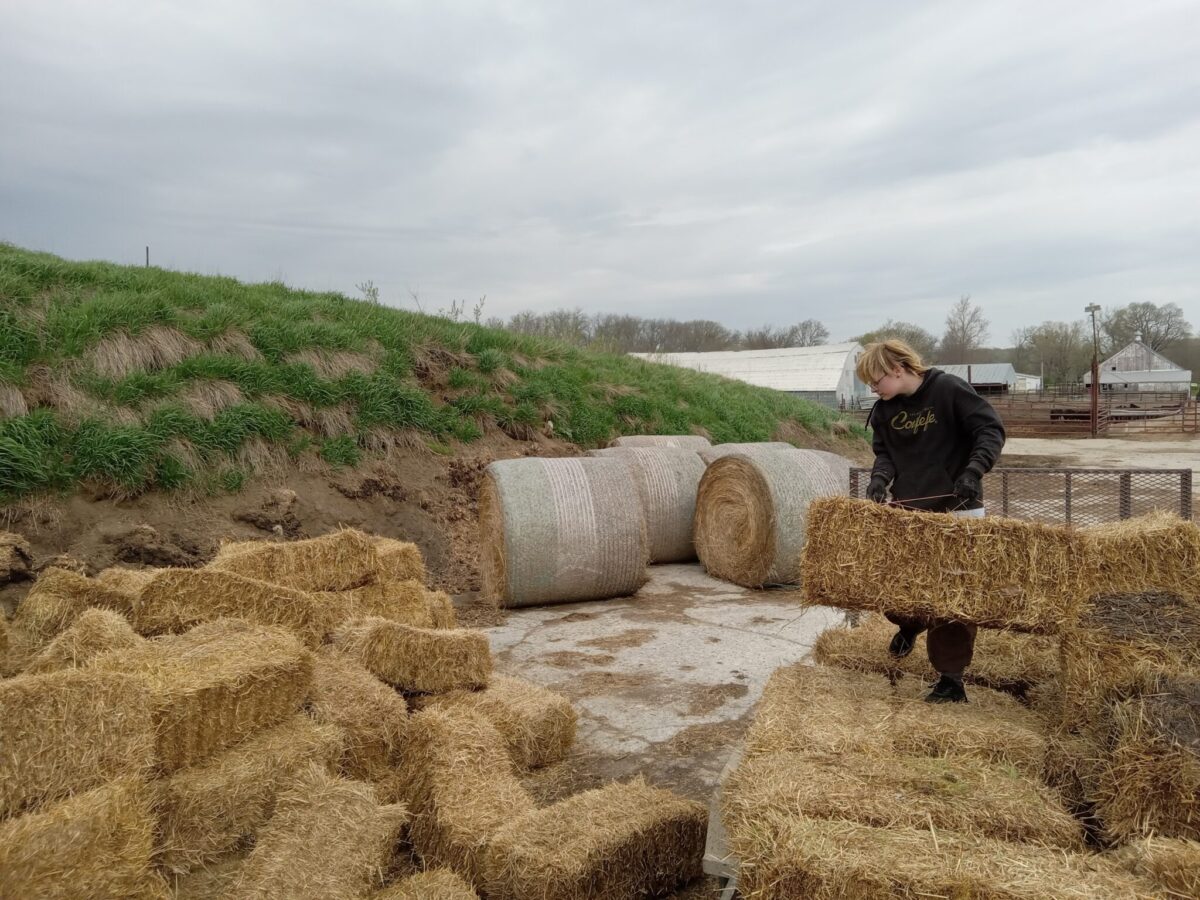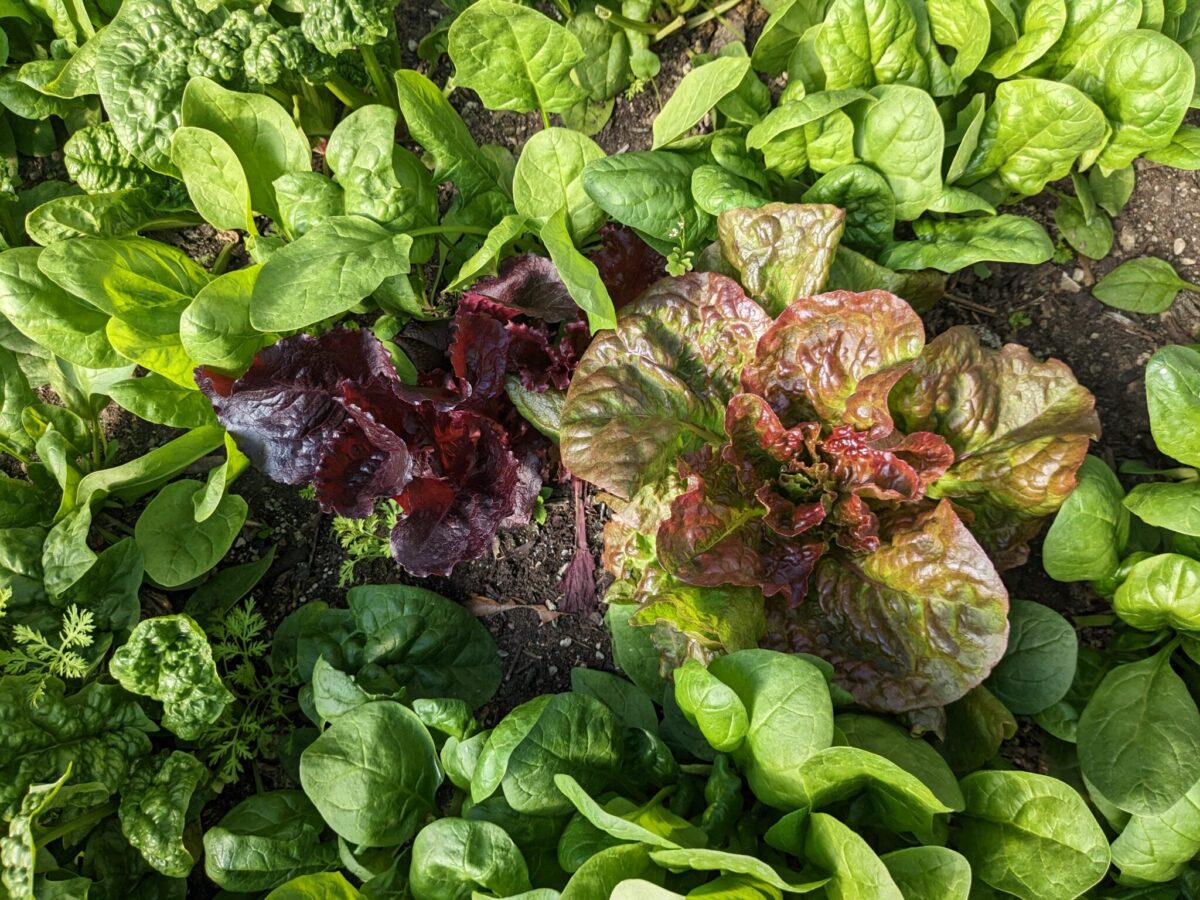
I am again on the Antioch Farm for my second co-op. However, so much has transpired since this time last year. The Antioch Farm is undergoing a renaissance of growth and transformation. Several forces are galvanizing together to create significant change in the directive of the farm and how it interplays into the college’s future.
In the most recent incarnation of the Antioch farm, it served purely as a green laboratory that provided a supplemental amount of produce to the college’s farm-to-table program. In recent years the average number of food production annually was around 5000 lbs. Last year, during its first true ‘build out’ phase and shift into higher production, we saw an annual yield of 14000 lbs. Last year was, in many ways, a year of learning. Many obstacles, challenges, and uncontrollable circumstances emerged and impacted the final production level. Starting fresh this spring, we are approaching this season equipped with a much better understanding and a strong strategy for the aspects that were hindrances last year. Without a doubt, the farm is slated to break the previous 14000 lb record. As the amount of food output increases, one of the hurdles must be navigated is what to do with it all. This year will be a time of pioneering this new territory and creating creative solutions to support the farm, the college, and the community.
There are several core goals with this new direction of the farm. Foremost, we are actively refining the garden bed system, fertility program, and crop selection to develop a model of micro-farming that can produce 30,000 lbs of food per acre in an ecologically responsible fashion. This is a tall order, but by no means impossible. Many successful modern market gardeners consistently meet this volume while balancing soil health and utilizing ecologically sound practices. For example, let us look at JM Fortier’s production and sale chart from his book The Market Gardener.
 If we only tally the 14 crops from this chart that are labeled as price per lb, the total adds up to 30,677 lbs. That figure comes from only half the total number of crops grown and sold. Under JM’s model, he produces this quantity on 1.5 acres. If you are unfamiliar with his work, he is internationally known and has trained countless farmers to replicate this bio-intensive agricultural system. At this junction of our farm’s growth, I think it is essential to add to the conversation that this goal is attainable and economically feasible if approached correctly. I cannot stress enough the value of small-scale farming. Unfortunately, many individuals claim that small-scale farming is a novelty and not a viable way to feed communities or have a credible life and career. It saddens me that this sentiment is even being propagated within our community. Please read this excerpt from JM to dispel this common claim.
If we only tally the 14 crops from this chart that are labeled as price per lb, the total adds up to 30,677 lbs. That figure comes from only half the total number of crops grown and sold. Under JM’s model, he produces this quantity on 1.5 acres. If you are unfamiliar with his work, he is internationally known and has trained countless farmers to replicate this bio-intensive agricultural system. At this junction of our farm’s growth, I think it is essential to add to the conversation that this goal is attainable and economically feasible if approached correctly. I cannot stress enough the value of small-scale farming. Unfortunately, many individuals claim that small-scale farming is a novelty and not a viable way to feed communities or have a credible life and career. It saddens me that this sentiment is even being propagated within our community. Please read this excerpt from JM to dispel this common claim.

What is described in the above excerpt to me is a premium example of a rewarding and ethical livelihood. No one will claim that farming is easy work, but it is satisfying. I am grateful to be part of this new chapter on the Antioch Farm. It is a beautiful place to be and work. I sincerely hope it can be a place that feeds not only bellies but also minds and hearts.
Fortier, Jean-Martin. The Market Gardener: A Successful Grower’s Handbook for Small-Scale Organic Farming. New Society Publishers, 2014.






